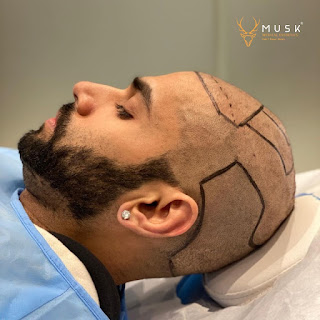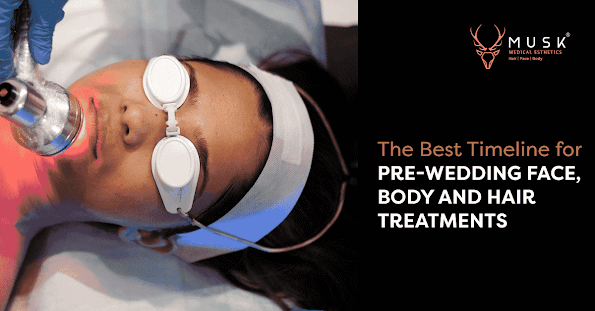PRP for Hair Loss: Efficacy, Safety, and Cost - Musk Clinic | Musk
PRP Hair Loss: Functionality, Safety, and Cost - Musk Clinic
While hair loss is a common problem facing many, PRP has become propaganda. You may have encountered phrases such as ‘PRP has fewer side effects,’ ‘PRP is less expensive,’ and so on. PRP has long been used as a treatment for hair loss and as a treatment for musculoskeletal disorders, however, today it is used to treat skin diseases.
This blog covers everything you need to know about PRP:
- What is PRP treatment?
- How effective is PRP treatment?
- Is PRP treatment safe?
- Is it an expensive story?
What is PRP Therapy?
Platelet-rich plasma, also known as PRP therapy, is an advanced medical treatment for hair loss by thinning, processing, injecting blood into the skin and follicles.
Blood plasma comprising 3-5x platelets present in human blood. In addition, it contains several growth factors such as platelet-derived growth factor (PDGF), vascular endothelial growth factor (VEGF), transforming growth factor (TGF), and proteins that accelerate repair and participate in hair growth. Doctors also use PRP treatment to heal muscle-related injuries, sprains, and more.
Steps to implement PRP treatment include:
Blood is drawn from the arm in the same way as for a blood test or donation
A blood sample is placed in a centrifuge and processed to detect plasma-rich plasma
Plasma with a high platelet content is detected in the bloodstream and injected.
Blood is later injected into the head
This is a common procedure and may vary slightly depending on the medical professional. Each stay can take up to an hour.
PRP is aimed at hair growth and does not include hair transplantation. Also, the source of treatment is the components of personal blood, due to reduced risk. Therefore, since PRP has fewer side effects, it is relatively considered a safe treatment. However, there are some cases where people should not vote for PRP. In particular, those taking medications for diseases such as cancer, chronic skin diseases, thyroid, low platelet count, etc. should avoid receiving PRP treatment.
In addition, people who are highly addicted to drugs, alcohol, and tobacco are being advised not to take medication. In addition, if you experience any reaction due to the ingredients present in anesthesia, consult your dermatologist before receiving PRP treatment.
The most common side effects of PRP include mild infection, dizziness, nausea, nerve damage / nerves among a few others.
People should receive treatment every 3-6 months, followed by a monthly stay. This depends on the end of the story and the outcome of the initial periods. When hair loss is under control, the amount of stay is reduced accordingly.+
Watch the full video here: https://youtu.be/NJEnYJUio4s
Does PRP Therapy Work?
According to a study conducted by leading researchers in people with androgenetic alopecia, PRP injections worked very well. It has contributed to hair growth, hair growth, and hair loss. Although there is no conclusive evidence of its effectiveness, here are a few studies that prove that the treatment is effective.
Several journals such as the Dermatologic Survey, the International Journal of Women’s Dermatology, and Aesthetic Plastic Surgery report that PRP effectively improves hair quality, reduces hair loss, hair growth, and more. The findings indicate that overall hair volume and growth are accelerated at a higher rate. In addition, the report notes that PRP has been shown to be an effective treatment for AGA in 10 out of 12 studies. One of the many reports shows that PRP works much better when combined with other AGA remedies as a topical treatment. It is proven to be 70% effective when used with other drugs.
PRP has shown positive results in situations such as:
Excessive hair loss due to stress
People in the age group 18-80
It works best for those with alopecia
People with short hair or baldness
With regard to PRP treatment, you need to make consistent efforts. It is done several times with specific gaps, which vary from person to person based on the patient's response to treatment. Results may appear after 3-4 months of treatment.
The findings are based on a small sample of approximately 200-400 people with symptoms of hair loss and androgenetic alopecia. Since the study area is small, experts suggest not to rely solely on these research papers.
Is PRP Therapy Safe?
Although injections can be found to be painful, treatment is safe when performed by an experienced medical professional. The injected site may have a slight swelling that occurs within a few hours. It usually causes minor pain, itching, and headache. In some cases, treatment may result in temporary hair loss.
It excludes risks associated with allergies, side effects, reactions, and similar issues. As mentioned earlier, it also causes problems in some situations. For example, if you are already taking cancer medication, or have a bleeding disorder, you should not rely on this medication.
You have to make a decision based on your health. You should make a decision based on detailed research after assessing your condition and consulting a health professional.
An Expensive Story?
Cost is a concern for many people. Once you are clear about the side effects and effectiveness of PRP, you may be wondering about the costs incurred in PRP treatment.
The cost of PRP varies depending on a few factors such as:
Location - It can be more expensive in the USA compared to India
Equipment quality - Equipment used to process blood samples also affects price decision
Used Nutrition Components - If any additional protein is combined with PRP, it can lead to additional costs
Costs vary depending on the severity of your infection, the quality of the materials used, the technical equipment used, and the attending physician. PRP treatment follows a monthly cycle in which you need to take three injections every month until the basic study is over. Later, once the condition is under control, you need to get nutritional treatment. You are advised to inject every four or six months.
Treatment continues for years to ensure that the scalp receives adequate support to promote hair growth. Regular injections every few days / months prevent hair loss and greatly increase hair growth.
Alternatively, if you are wondering whether it can be included in medical insurance or not, you need access to your insurance company. This is because many companies do not treat it as a drug and treat it as a mere cosmetic. Therefore, they do not incur any such costs. You can consult your insurance provider before treatment.
Conclusion
In addition to PRP treatment, there are several remedies available such as hair transplants, Rogaine, and more. However, these treatments appear to be more expensive, time-consuming, and painful compared to PRP. In the case of PRP, the least expensive option you can choose at any time.
In addition, PRP is considered a fast hair growth treatment that speeds up the process faster. The fact that it does not lead to any risks associated with side effects or hair damage makes it less secure compared to others. The best course is to examine your condition, consult a doctor, and make an informed decision.
If you are unsure, feel free to contact us at Musk Clinic. We are one of the few Gujarat clinics that offer completely safe PRP treatment for hair loss. For more information, contact our expert.




Comments
Post a Comment